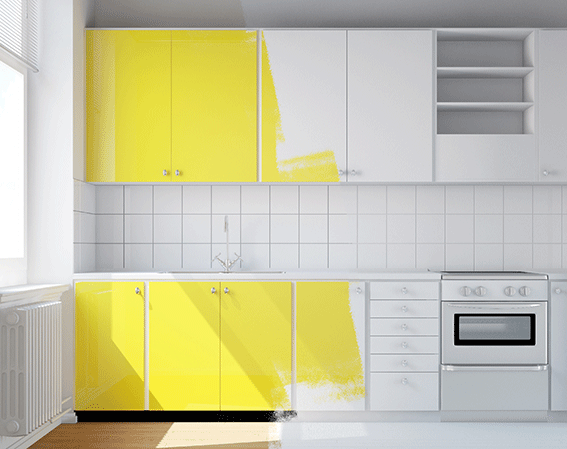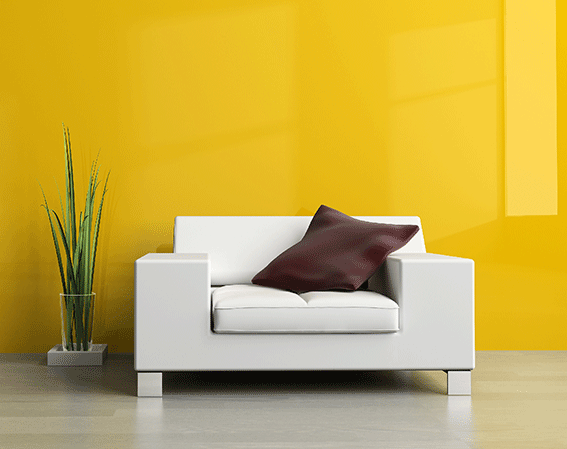HOW TO PERFECT YOUR NEXT PAINT JOB




Preparing the surface is the single most important step when painting a room. Proper preparation will save you time, money, and sanity in the long run.




PREPARATION
Step 1: wash
Wash the surface with a light abrasive, like Scotch-Brite or a similar product, sugar soap and a generous portion of elbow grease. For the best result dilute the cleaning products according to the manufacturer’s instructions.
After washing, rinse the surface with clean water and leave to dry to overnight ensure the best possible adhesion of your new paint.
Step 2: remove flakes
Once dry, all flaking paint needs to be removed using a scraper or a spatula. A power wire brush tool is handy, but extreme care needs to be taken not to damage the underlying surface.
Step 3: prime
If you need to use bonding liquid, try to limit it to only exposed plaster areas and use a good quality product such as Chamber Bonding Liquid. Leave to dry for 4 to 6 hours before skimming the affected areas with a PlasterSkim. Leave the surface to dry for six to eight hours to ensure proper curing before you continue


A lick of paint can transform just about any surface. The trick is knowing which paint to use where.




WHICH PAINT IS THE RIGHT PAINT
Imperfect walls
Matt finishes can hide little nicks and are perfect for uneven walls.
High traffic areas
Silk or sheen, semi-gloss and glossy finishes are easier to wash, but tend to highlight any uneven spots on the walls or ceiling.
Bathrooms and kitchens
Bathrooms and kitchens, are subjected to water and high levels of humidity. The best paint for these areas is an enamel such as
our Finest Non-Drip or our Chamber water based enamel.
THINGS TO REMEMBER
Proper ventilation not only allows the paint to dry properly, but also helps with your breathing.
Let the paint dry before applying the next
coat - at least 4 hours for acrylics and overnight for enamels.
Always apply paint in an even manner to avoid lines.
On the following page our paint experts have put together a table that shows which paint to use in which area.


Quality rollers make a difference. You get what you pay for and it is vital that you get the right roller for the paint that you areusing, as well as the surface you are painting on.




GET THE RIGHT TOOLS FOR THE JOB
Which roller is right?
- Mohair for enamel paints
- Sheepskin or synthetic for acrylic paints
Use a roller tray and cover your roller evenly in paint. Every time you start painting a new strip reapply paint to your roller. Always start the new strip from the opposite end of the previous.
Once you have applied four strips from top to bottom, spread the paint horizontally and finish with a light stroke from the bottom to the top.
Extending your roller
Attach your roller to a 1.2m painter’s extension pole or a broom handle to provide better control and accessibility for hard to reach places.
Brush painting
Coat your brush so that only half of each bristle is dipped in paint. Scrape the excess paint of the brush on the inside of the paint container and start painting from the top downwards.
REMEMBER
Rollers and brushes should be cleaned and dried before use.
Always clean up any paint splatter immediately with a cloth and turpentine.


Here are a few things to keep in mind to ensure that your Rembrandt stays picture perfect.




PAINT LIKE A PRO
• Two coats of paint ensures a smooth look
• Paint shouldn’t be applied before 8am in summer or 10am in winter
• Don’t thin paint unless applying to a porous surface or if the method of application requires thinner paint (eg. spraying), and then always use the appropriate thinner
• Observe all over-coating limits to ensure that paint doesn’t lift or wrinkle
WATER-BASED PAINTS
Acrylics and PVA’s
• Water-based paints shouldn’t be applied after 3pm in summer and 2pm in winter to ensure that the paint dries sufficiently. This is especially applicable to outside areas.
SOLVENT-BASED PAINTS
Enamel, QD Enamel, Epoxy Enamel
• Apply in the morning to allow enough time for the paint to cure before nightfall.
• Don’t apply a second coat of paint before the recommended curing time.
• Colder temperatures slow the curing time.
• Epoxy enamel has an extended curing time. Consult the Technical Data Sheet for details.
WOOD FINISHES
Wood needs a different type of care and here is how to do it:
• Sand your wood surface with increasingly fine sandpaper, in the direction of the wood’s grain.
• Start painting, let dry and then sand between coats with fine steel wool for a smooth professional finish before applying another coat.
• Heavy coatings tend to cause running and sagging paint. Rather keep to light layers.


